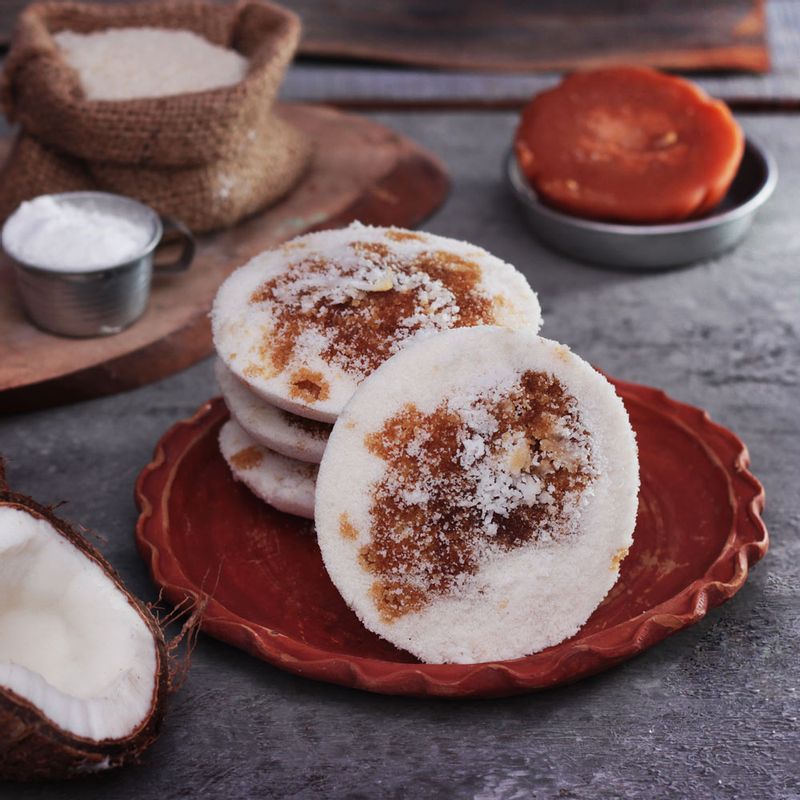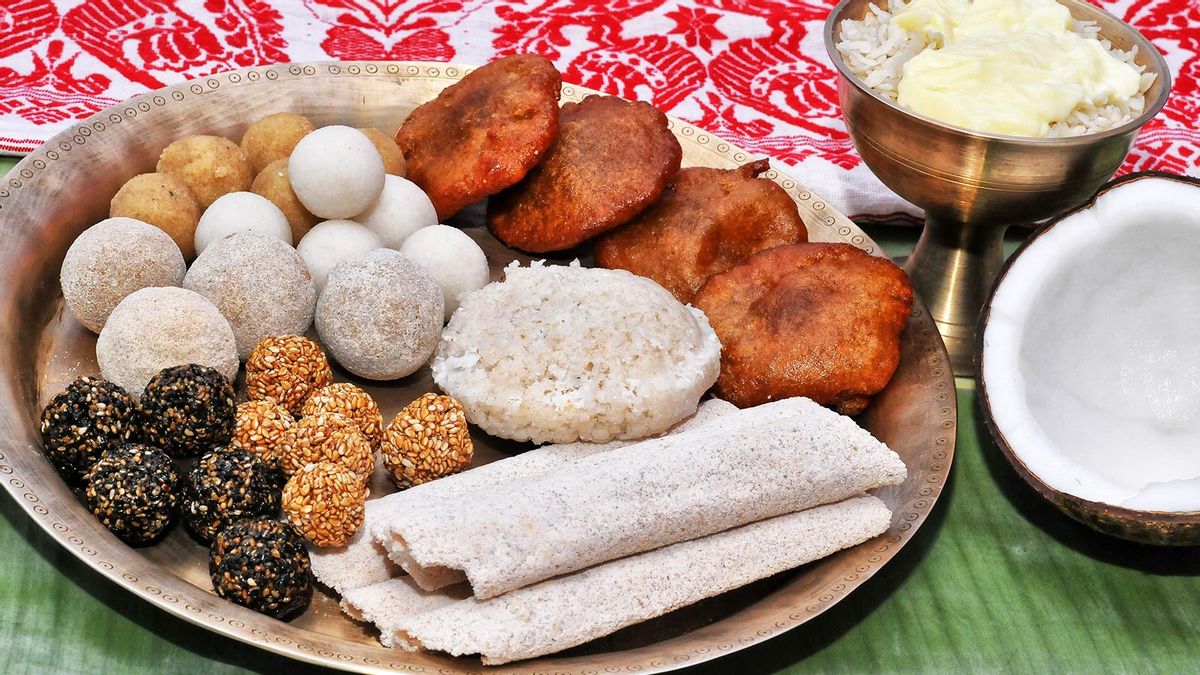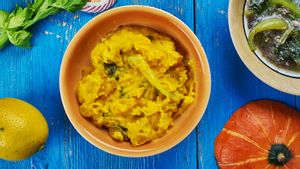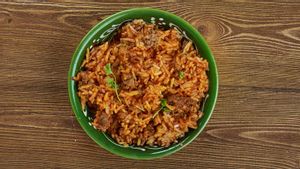Since I was a child, every April, the sweet fragrance of bora saul (sticky rice), narikol (coconut) and gur (jaggery) wafted into the rest of the home from the kitchen. That’s when I knew that my mum and grandma are whipping up Pithas (Assamese pancakes) by the kilo.
We would be dressed to the nines in new clothes, sing and dance joyously to commemorate the Assamese New Year and welcome the season of sowing. When guests would visit, my mum would present a cornucopia of mouthwatering homemade Pithas, that she toiled all day to make, intricately laid out on ban kaahis (bell metal plates). Rongali Bihu wouldn’t be complete without savouring these authentic Assamese delicacies.
Here are the Pithas that always find their way onto the ethnic ban kaahi on Rongali Bihu:
Til Pitha, a powerhouse of nutrition
The iconic Til Pitha or black sesame pancakes can’t be made by just about anyone, trust me—I have tried. It takes years of practice, nimble hands, and plenty of sweat and tears to master the finesse of making these. The problem: some wouldn’t hold, and others wouldn’t fold. But when you bite into one of these black-and-white pithas, the smoky flavour of glutinous rice and black sesame seeds come together to delight your taste buds, with jaggery that lends the sweetness.
“Sesame is extremely good for health, especially great for skin, and is still available in the market until April, after it is harvested in January,” explains Rina Borthakur, a Guwahati-based food historian. “Plus, no oil is used to make these Pithas so that’s an added health bonus,” she adds.
“Rice is the mainstay of Assam so most of our Pithas are made of a type of rice, if not bora saul, another variant that is locally grown. Since coconut is also another staple, some people swap the sesame seeds for coarsely ground coconut as the stuffing in these Pithas,” informs Guwahati-based Indranee Phukan who is a communication consultant with IHCL.
Jyoti Das, the author of the popular Assamese cookbook—Ambrosia, From the Assamese Kitchen—and a dozen other Assamese cookbooks has an interesting take on this. “Those who are health-conscious, prefer to use black sticky rice or red sticky rice as the base for these pithas (kola bora saul and ronga bora saul respectively). Not to forget, the beautiful colour pay-off of these variants of rice grown in parts of Upper Assam,” says Das.
Make this at home
The sticky rice needs to be soaked for 3-4 hours, and then lovingly hand-pounded to a fine powder which serves as the perfect base for Pithas. (Note: modern mixer-grinders will make the powder too dry).
The rice powder is then sieved and the sesame seeds stir-fried until they crackle, then hand-pounded coarsely. This is then mixed with grated jaggery and orange rind. On a heated girdle, spread a thin layer of some rice powder in a round-shape, smaller than a roti. Sprinkle the sesame and jaggery mixture on top as a filling.
Fold the Pitha in half and wait till it turns crisp. Since this Pitha resembles a half-moon (Jun in Assamese), they are also called Jun Pitha. But some households prefer to fold these Pithas further and make them into slimmer sticks, making them easier to pick up and eat. They pair beautifully with a piping hot cup of tea.
Recipe courtesy: Jyoti Das
Ghila Pitha, the only fried pitha

These sticky rice pancakes or balls are flavoured with jaggery and fried in mustard oil. They are delicious and a must-have during Bihu. Since they are the only type of popular Pitha that is fried, they are also called Tel Pitha (oil-fried in Assamese).
Ghila Pitha is crisp on the outside and soft inside. If you are looking for a savoury Pitha, you can skip the jaggery and add salt to the rice batter. Some households make ghila pithas in the shape of a Xutuli (an Assamese musical instrument shaped like a half-moon) and they are called Xutulki Pitha.
Make this at home
Soak some sticky rice (that will bind the pitha) and regular rice (that will serve as the base) together for an hour. Then drain and pound the rice into a fine powder.
Next, blend jaggery with water into a smooth paste. Add the jaggery paste to the rice powder. You can sprinkle lemon rind into the mix too. Keep the batter aside for 4 to 5 hours.
Then, heat mustard oil in a kadhai, drop tablespoon-size balls of batter into the oil. Deep fry the Pithas till golden brown on medium heat.
Recipe courtesy: Jyoti Das
Tekeli Pitha, steamed and healthy

These pithas resemble idlis, but when you bite into them, you’re in for a sweet surprise. “Traditionally, these pithas were steamed at the mouth of a clay pot (tekeli in Assamese) on woodfire, hence the name. But in most households nowadays, these rice pancakes are steamed on the mouth of a kettle on a gas stove. And since they are steamed, they are healthy too,” explains Borthakur.
Phukan chimes in about the health factor and mentions that these pithas are a popular breakfast staple in Assam. “We make them fresh every morning for the breakfast buffet and guests from all over the country and world have loved it. Since there are no preservatives added to Pithas, they last at the most for a week, if stored properly. The tekeli pitha has a shorter shelf-life and needs to be consumed the same day.”
Make this at home
Soak glutinous rice in water for a few hours. Then drain the water and pound to grind into a damp rice batter.
Grate some jaggery and shred fresh coconut—these will serve as the filling.
Fill water in a kettle and let it boil. Then, remove the lid and place a muslin cloth instead.
Put the first thin layer of rice flour on the cloth, then add a bit of the sweet mixture. Envelope it with some more rice flour. Loosely place the lid on the kettle, not allowing the steam to escape. The heat will cook the Pitha.
Recipe courtesy: Rina Borthakur
Sunga Pitha, a medley of local ingredients
Sunga or bamboo-tube Pitha is an interesting Assamese delicacy “as it brings together three abundantly-available and locally-grown ingredients that are the mainstay of Assamese agriculture—rice, bamboo and coconut,” says Phukan. These pithas marry the flavour of bamboo to rice and impart a delicate taste. Some also swap the coconut for salt in the recipe.
Make this at home
Mix Bora Saul with grated coconut. Put this concoction inside a tender bamboo stem tube. Keep some empty space in the tube so that the mixture can expand. Cover the tube with a banana leaf, and slow roast over a fire to cook.
First cook the mouth of the tube, and then rotate the tube so that the Pitha cooks evenly and properly.
Once the tube cools down, it is split open to reveal long pithas. These are sliced into bite-sized portions and served with cream and jaggery.
Recipe courtesy: Jyoti Das
Make Assamese Larus at home
Larus or laddoos in Assam are made from a variety of ingredients, but the most popular are the Tilor Laru (Black sesame laddoo) and Narikolor Laru (Coconut laddoo). For the former, til and gur are mixed well by hand and then slightly cooked over low flame. Once cool, they’re rolled into balls. For coconut larus, grated coconut and sugar are mixed together. Larus can be stored in an airtight container and enjoyed later with a cup of hot tea.





